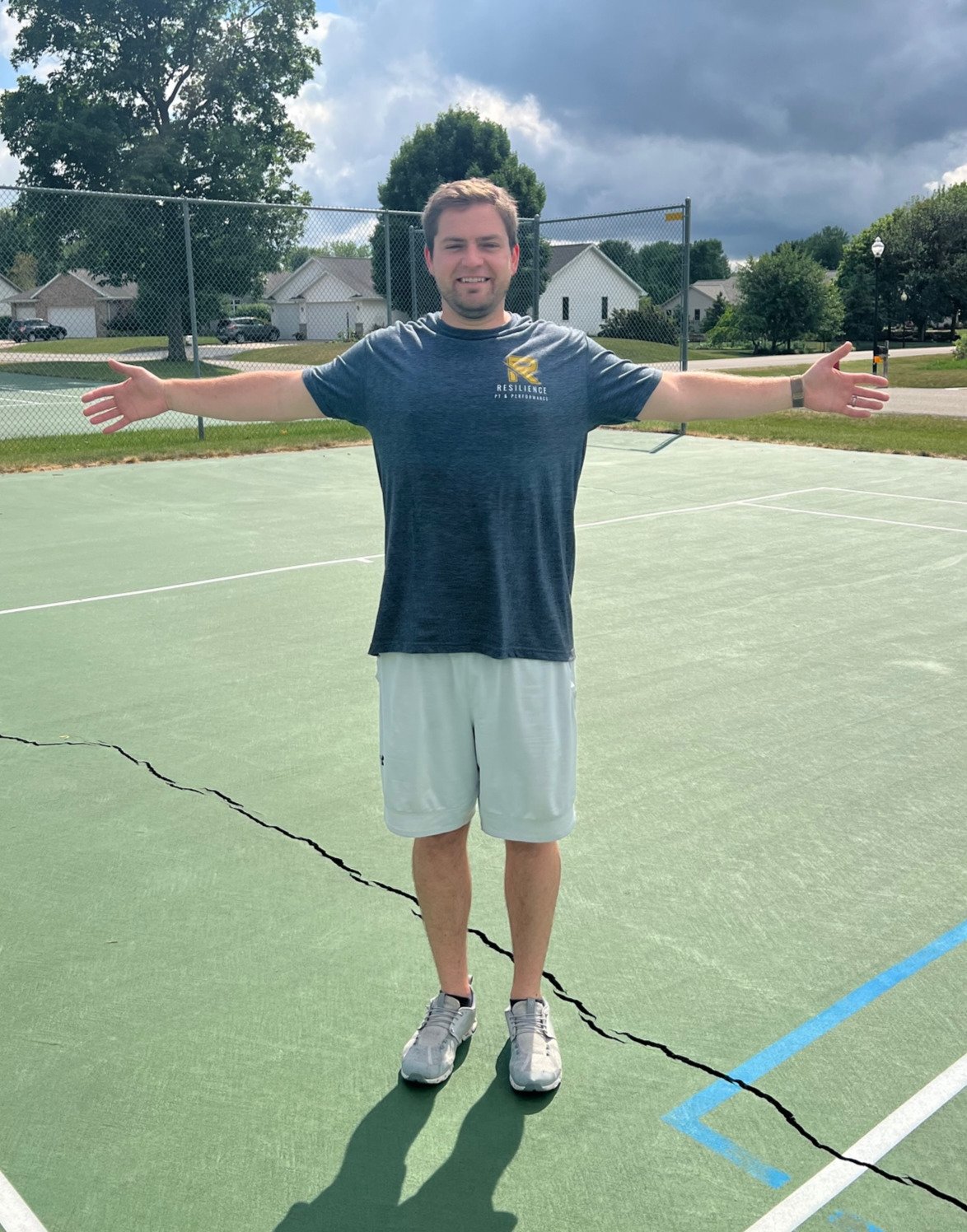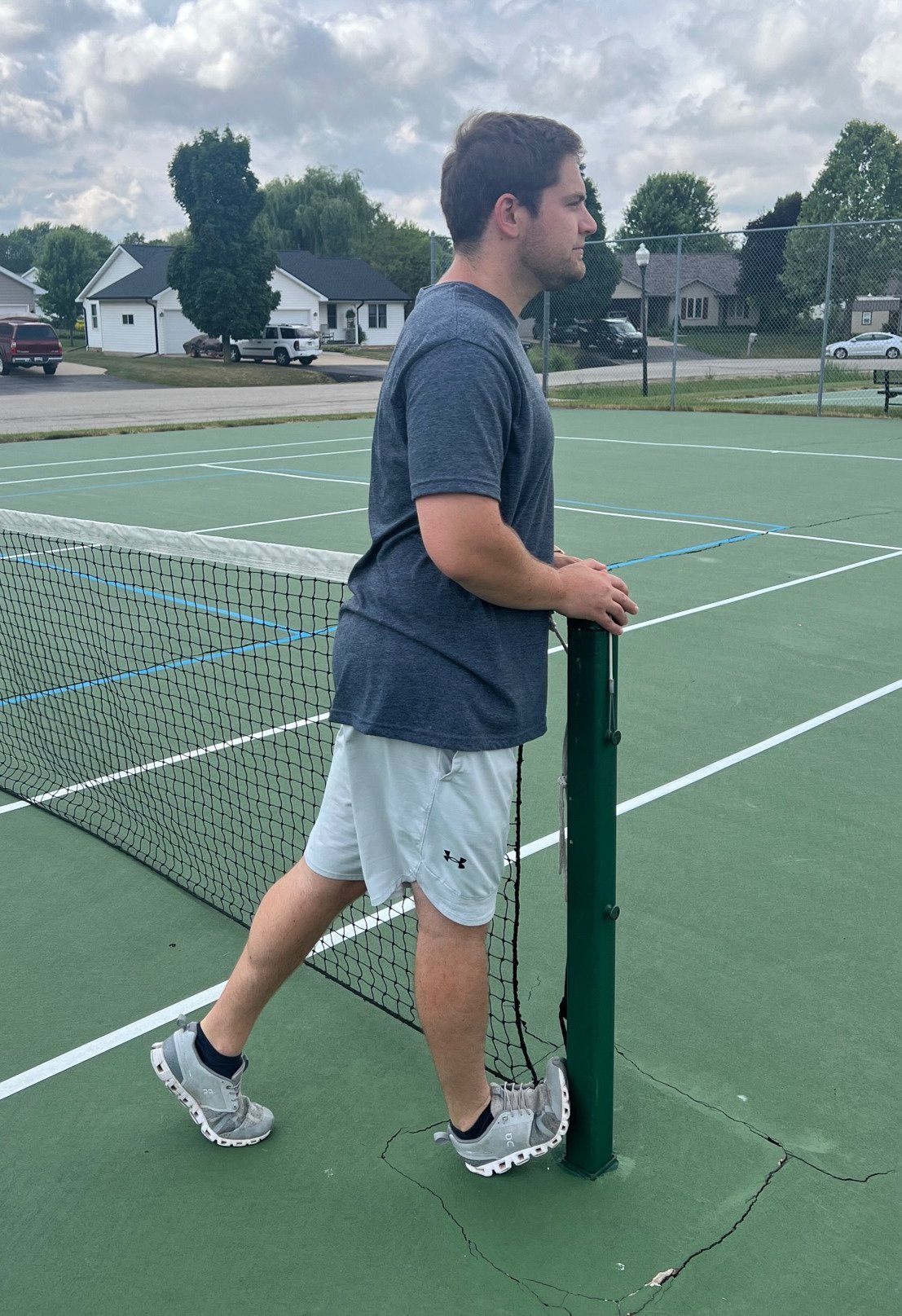Pickleblog Part II
As discussed in Part I of this blog series, Pickleball continues to surge in popularity. The sport’s increased popularity has also raised increased awareness of the potential for injury. In Part I, I placed this risk of injury into 3 different buckets. For more information on this please go back and read Part I. For today’s blog, I want to spend some time sharing some specific actions you can implement to help avoid injuries that fall into Bucket 3: Acute sprains and strains.
As with any type of activity you engage in, doing a stretching routine is the best way to set yourself up for success to limit the chance of an injury. A stretch routine should last at least 5-7 minutes or until you simply can feel that you are moving more freely. Another important element of stretching is that it should be specific to the type of activity you are about to participate in. The ultimate goal is to raise our core body temperature allowing our joints and soft tissue structures to perform more optimally.
As part of my recommendation, I have highlighted both dynamic and static stretches to be included in the routine. No one will argue the importance of stretching needing to be dynamic, but there is some level of controversy in the literature surrounding static stretching to loosen up before activity. Static stretching is a great way to improve the flexibility of our soft tissue structures but is not the most optimal method of stretching before participating in sport. However, what we do know, is that if you are going to perform static stretching as part of a stretching routine, the benefits are enhanced if the core temperature has increased from the homeostatic level. With all that being said, let’s dive into what an effective warm-up routine before playing pickleball could look like.
Phase 1: Warm-Up; Focus on increasing heart rate to raise the core temperature from movements that are safe for you (1 minute):
This could look very different depending on where your fitness level is at
Options include a light jog around the perimeter of the pickleball ball court, high knees, and/or butt kicks.
Phase 2: Dynamic Stretches (2-3 minutes)
As stated earlier, dynamic stretches should be specific to the activity you are about to perform. Pickleball requires us to move in all 3 planes of motion: Sagittal (up and down), frontal (side-to-side) and transverse plane (rotational). As a result, our stretches need to touch on all 3 planes
Dynamic stretches can be performed in 1-2 sets and 8-10 reps each or until you feel “warm”
1. Forward Lunge with Arm swing Up (Sagittal plane)
2. Backward lunge with rotational twist to left and right (Transverse plane)
3. Side lunge (Frontal plane)
4. Frankenstein’s = Targeting Hamstrings
5. Arm circles = Targeting shoulder joint
6. Crossovers = Targeting hip joint
Phase 3: Static Stretches (2-3min)
Static stretch should be held at least 30 seconds and performed on both sides
1. Ankle dorsiflexion = Targeting ankle joint
2. Calf Stretch
3. Hip flexor stretch
4. Wrist extensors and flexors stretch
Stretching is rarely fun and often feels like a waste of time. By following the simple routine shown above, your body will be able to perform at a higher level which will lower your risk of injury and allow you to perform at a higher level. If any of the stretches above, do not feel right or safe for your body please refrain before consulting myself or another fitness-related coach.
Until next time,
Dr. Ryan











